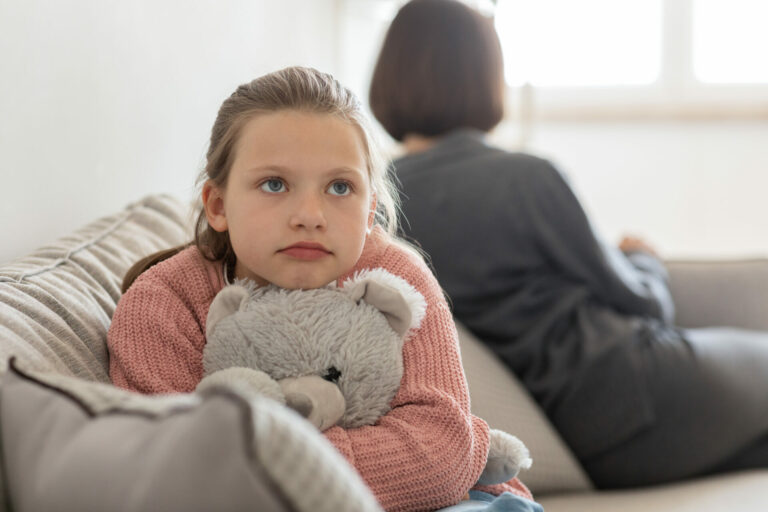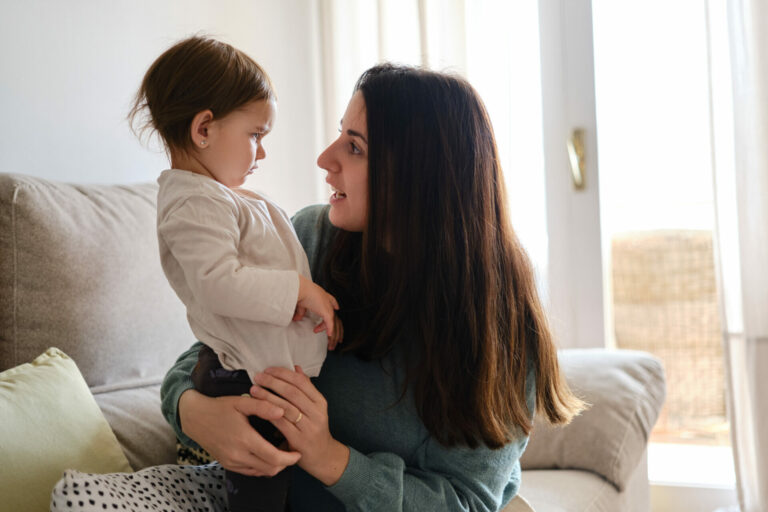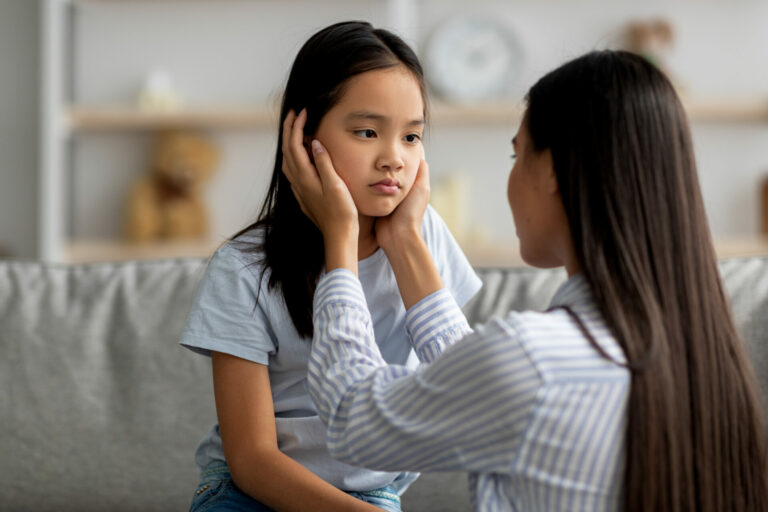Trauma can disconnect the mind and the body. An important part of healing, therefore, is to increase mind-body awareness. The goal is to help the mind know that the body is safe now, and that the two can work together.
Many activities can improve mind-body awareness. Some examples include dragon breathing (breathing in, and then opening eyes and mouth big while breathing out), body scanning, and power poses paired with affirmations (Perez, 2020). Deep breathing helps the body release, which triggers feelings of safety. Body scanning helps check the body for tension, allowing release of that tension. Power poses can build confidence (Clear, n.d.). Children and adults can take mindful walks, incorporating use of their five senses to not only build body awareness, but environmental awareness as well (Your Therapy Source, n.d.). Progressive muscle relaxation is a specific practice to build awareness of what it feels like to be tense, and then relaxed (Cuncic, 2023). Not all mind-body awareness activities have to be super intentional, however. They can also be fun and playful.
Playful activities automatically decrease the flight-fight-freeze response because they increase fun. Play, therefore, can be a good way to build mind-body awareness. Activities such as blowing bubbles and blowing up balloons incorporate breath and body awareness (Leiviska, 2023). Jumping on a trampoline can improve awareness of space. Asking questions about emotions in books or videos can increase emotional literacy by linking emotions with physical expression (The OT Toolbox, 2022). The list goes on. Linking mind and body are more about building awareness than anything else.
Comfort is another way to pursue mind-body awareness. Implements such as a weighted blanket feel heavy on the body while soothing and reconnecting the brain (Leiviska, 2023). Some people enjoy swinging or other repetitive, rhythmic movement (Crisis and Trauma Resource Institute, n.d.). The goal is to notice the body, and notice that the body is safe when doing these things.
Do the mind and body reconnect quickly? Often not when a person has a history of trauma. Practicing mind-body awareness increases the connective pathways, though, and can augment and improve healing as it occurs holistically.
Trauma can disconnect the mind and the body. An important part of healing, therefore, is to increase mind-body awareness. The goal is to help the mind know that the body is safe now, and that the two can work together.
Many activities can improve mind-body awareness. Some examples include dragon breathing (breathing in, and then opening eyes and mouth big while breathing out), body scanning, and power poses paired with affirmations (Perez, 2020). Deep breathing helps the body release, which triggers feelings of safety. Body scanning helps check the body for tension, allowing release of that tension. Power poses can build confidence (Clear, n.d.). Children and adults can take mindful walks, incorporating use of their five senses to not only build body awareness, but environmental awareness as well (Your Therapy Source, n.d.). Progressive muscle relaxation is a specific practice to build awareness of what it feels like to be tense, and then relaxed (Cuncic, 2023). Not all mind-body awareness activities have to be super intentional, however. They can also be fun and playful.
Playful activities automatically decrease the flight-fight-freeze response because they increase fun. Play, therefore, can be a good way to build mind-body awareness. Activities such as blowing bubbles and blowing up balloons incorporate breath and body awareness (Leiviska, 2023). Jumping on a trampoline can improve awareness of space. Asking questions about emotions in books or videos can increase emotional literacy by linking emotions with physical expression (The OT Toolbox, 2022). The list goes on. Linking mind and body are more about building awareness than anything else.
Comfort is another way to pursue mind-body awareness. Implements such as a weighted blanket feel heavy on the body while soothing and reconnecting the brain (Leiviska, 2023). Some people enjoy swinging or other repetitive, rhythmic movement (Crisis and Trauma Resource Institute, n.d.). The goal is to notice the body, and notice that the body is safe when doing these things.
Do the mind and body reconnect quickly? Often not when a person has a history of trauma. Practicing mind-body awareness increases the connective pathways, though, and can augment and improve healing as it occurs holistically.
References
Clear, J. (n.d.) How to be confident and reduce stress in 2 minutes per day. James Clear. https://jamesclear.com/body-language-how-to-be-confident
Crisis and Trauma Resource Institute (n.d.) https://ca.ctrinstitute.com/blog/childhood-resilience-rythym/
Cuncic, A. (2023, January 23). How to practice progressive muscle relaxation. Very Well Mind. https://www.verywellmind.com/how-do-i-practice-progressive-muscle-relaxation-3024400
Leiviska, L. (2023, April 6). 47 emotional regulation activities for kids every mom needs. A Heart for All Students. https://aheartforallstudents.com/emotional-regulation-activities-for-kids/
Perez, O.C. (2020, March 26). 8 effective emotional regulation techniques for kids. YoReMi Kids. https://www.yoremikids.com/news/emotional-regulation-activities-for-kids
Beck, C. (2022, September 10). The OT Tool Box. Zones of regulation and self-regulation activities. https://www.theottoolbox.com/zones-of-regulation-activities/
Your Therapy Source. (n.d.). 10 emotional regulation activities for kids. https://www.yourtherapysource.com/blog1/2022/05/03/10-emotional-regulation-activities-for-kids/
References
Clear, J. (n.d.) How to be confident and reduce stress in 2 minutes per day. James Clear. https://jamesclear.com/body-language-how-to-be-confident
Crisis and Trauma Resource Institute (n.d.) https://ca.ctrinstitute.com/blog/childhood -resilience-rythym/
Cuncic, A. (2023, January 23). How to practice progressive muscle relaxation. Very Well Mind. https://www.verywellmind.com/how-do-i-practice-progressive-muscle-relaxation-3024400
Leiviska, L. (2023, April 6). 47 emotional regulation activities for kids every mom needs. A Heart for All Students. https://aheartforallstudents.com/ emotional-regulation-activities-for-kids/
Perez, O.C. (2020, March 26). 8 effective emotional regulation techniques for kids. YoReMi Kids. https://www.yoremikids.com/news/ emotional-regulation-activities-for-kids
Beck, C. (2022, September 10). The OT Tool Box. Zones of regulation and self-regulation activities. https://www.theottoolbox.com/zones-of-regulation-activities/
Your Therapy Source. (n.d.). 10 emotional regulation activities for kids. https://www.yourtherapysource.com/ blog1/2022/05/03/10-emotional-regulation-activities-for-kids/




